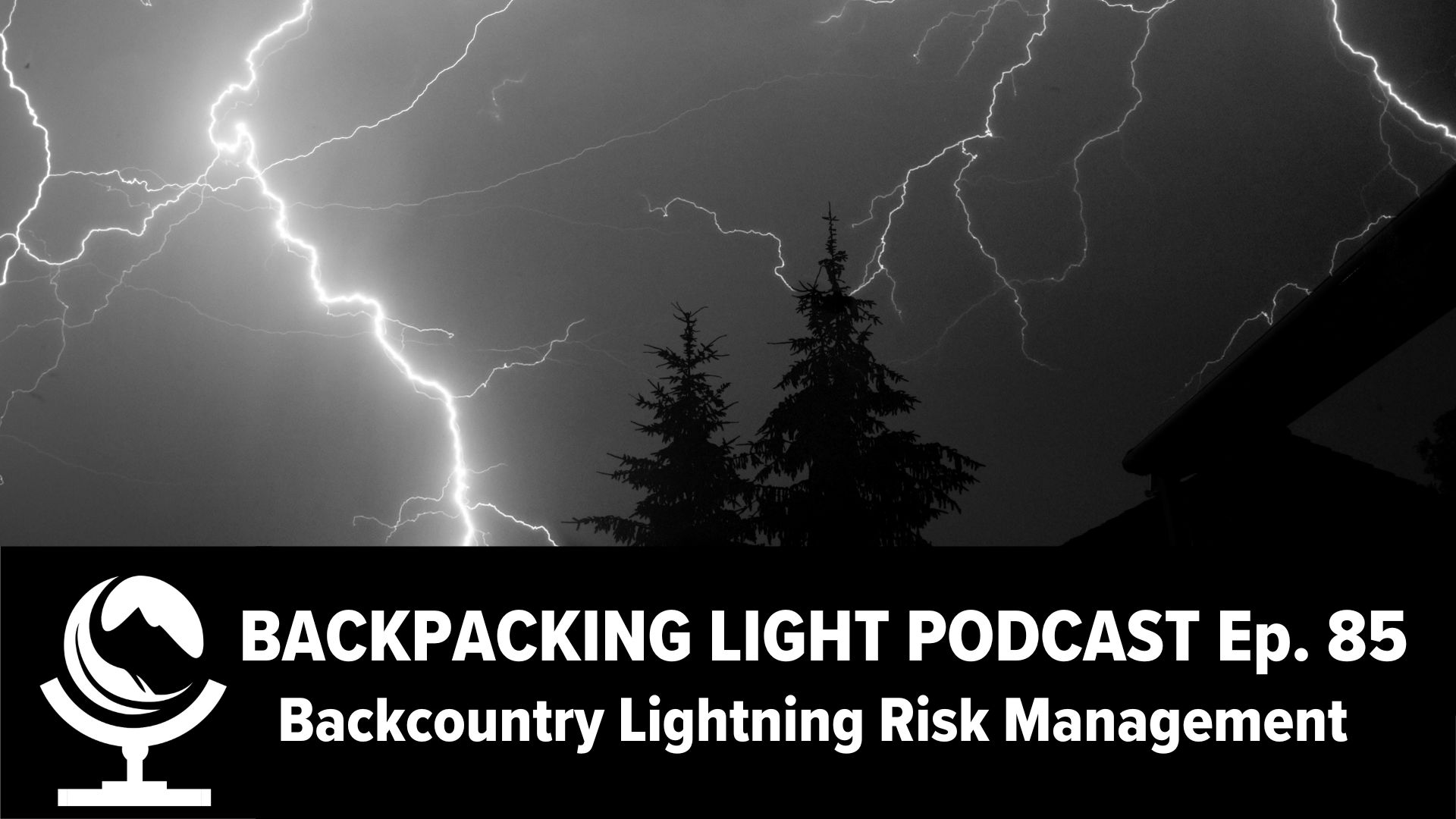Episode 85 | Backcountry Lightning Risk Management
Episode Summary
In this episode of the Backpacking Light podcast we're going to talk about lightning storm risk management in the backcountry.
Listen
Summary
In this episode of the Backpacking Light podcast we’re going to talk about lightning storm risk management in the backcountry.

What’s new at Backpackinglight?
- Webinar: How to Pitch an Ultralight Tent
- Clinic & Trek: October ’23 – Live Skills Clinic & Guided Trek in Rocky Mountain National Park – Become an Unlimited Member to gain access to early enrollment
- Giveaway: Enter The Ultralight Giveaway!
- From our Newsletter: The Yellowstone-Teton Tornado
- Newsletter: Sign up for the Newsletter
- Podcast: Episode 84 | Satellite Messaging (ZOLEO)
- Blog Post: The Simple Kit
- Gear: Hyperelite Mountain Gear Elevate 22 Pack, Mid-1P Tent, and Unbound 40F Quilt
- Membership: Support the podcast and more (use the podcast listener coupon from this episode for 20% off your first year!)
Lightning
- Introduction – Anecdotes from Long’s Peak, Rocky Mountain National Park and the Wind River Range
- What is lightning?
- The seasonality of lightning – June, July, and August in the Mountain West; wider windows in the Midwest and Southeast.
- Mechanisms of injury – ground current, side flashes, contact, upward leaders, and direct strikes
- Pathophysiology – electrical shock, secondary heat production, and explosive force
- First aid for lightning strikes – Scene Safety & Basic Life Support, if multiple victims triage, then assess, monitor, and evacuate.
- Risk Mitigation – avoid travel through passes, peaks, and ridges when storms are nearby; in many situations this is before noon.
- Other risk management tools – flash bang rating system, the 30/30 rule, terrain and environmental features
- Regardless of where you are, executing the crouch position on a foam pad is the best thing you can do in a lightning storm.
- When you can sense the corona of a lightning bolt, then you are at extreme risk of being injured by a lightning strike.
- Backcountry Lightning Risk Management (PDF)
Submit a Tip,Trick, or Question
Share your tips, tricks, and questions on the podcast – submit it via email to [email protected].
Related Content:
- Places: I Got Caught in a Sierra Storm, on Purpose
- Masterclass: Lightweight Backpacking in Inclement Conditions
- Forum: Trip Planning & Thunderstorms
How to Subscribe
- Apple Podcasts | Spotify | RSS
More Episodes
Credits
- Executive Producer - Backpacking Light; Show Director and Host - Ryan Jordan; Producer - Chase Jordan; Theme music: Look for Me in the Mountains written by Chris Cunningham and Ryan Jordan, performed by Chris Cunningham (acoustic guitar, lead and harmony vocals, harmonica), Chad Langford (upright bass), and Tom Murphy (mandolin), produced by Basecamp Studios in Bozeman, Montana.
Feedback / Tips / Questions
More Backpacking Light
- Sign up for the Newsletter.
- Become a Backpacking Light Member.
- Follow us elsewhere on the web: YouTube | Instagram | Facebook
Disclosure
- Sponsorship Policy: Backpacking Light does not accept compensation or donated/discounted products in exchange for product mentions or placements in editorial coverage, including any podcast episode content not excplicitly identified as sponsored content.
- Some (but not all) of the links in these show notes may be affiliate links. If you click on one of these links and visit one of our affiliate partners (usually a retailer site), and subsequently place an order with that retailer, we receive a commission on your entire order, which varies between 3% and 15% of the purchase price. Affiliate commissions represent less than 15% of Backpacking Light's gross revenue. More than 70% of our revenue comes from Membership Fees. So if you'd really like to support our work, don't buy gear you don't need - support our consumer advocacy work and become a Member instead.
- Learn more about affiliate commissions, influencer marketing, and our consumer advocacy work by reading our article Stop wasting money on gear.




Home › Forums › Episode 85 | Backcountry Lightning Risk Management